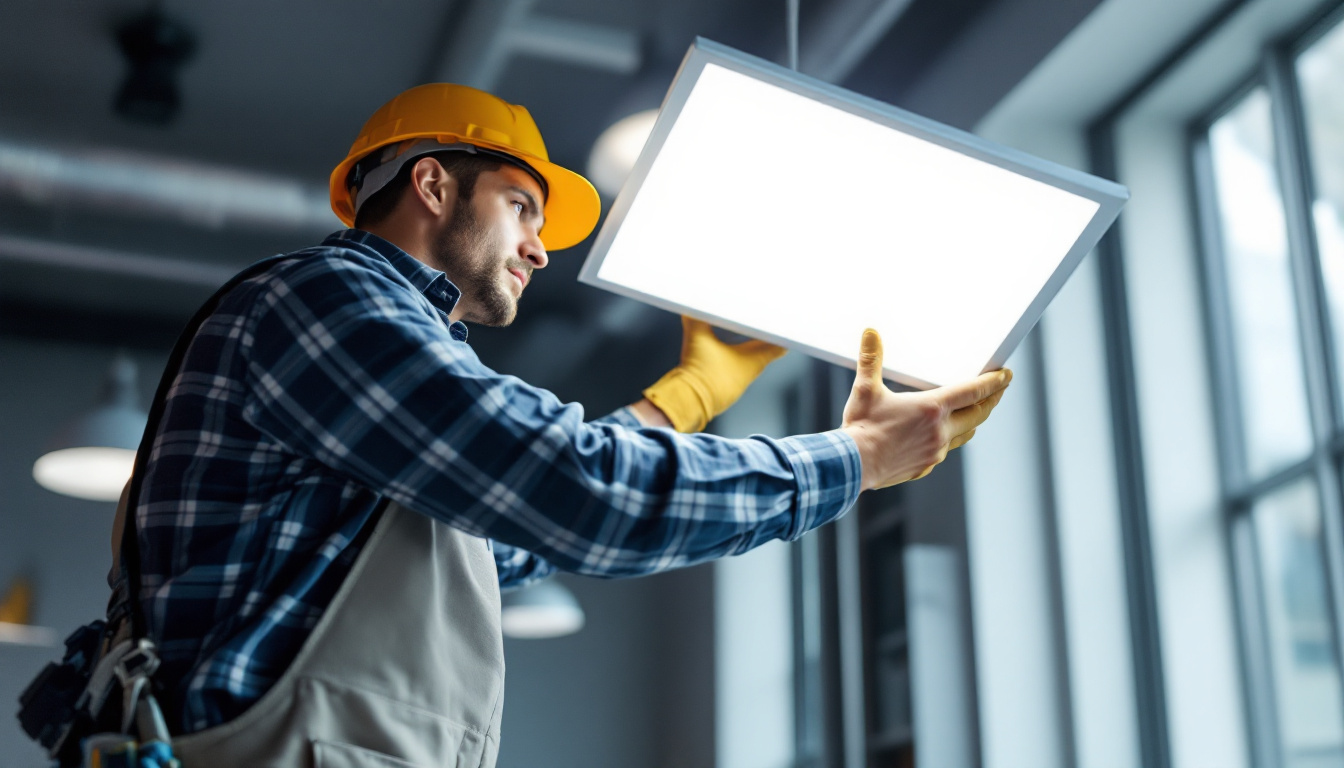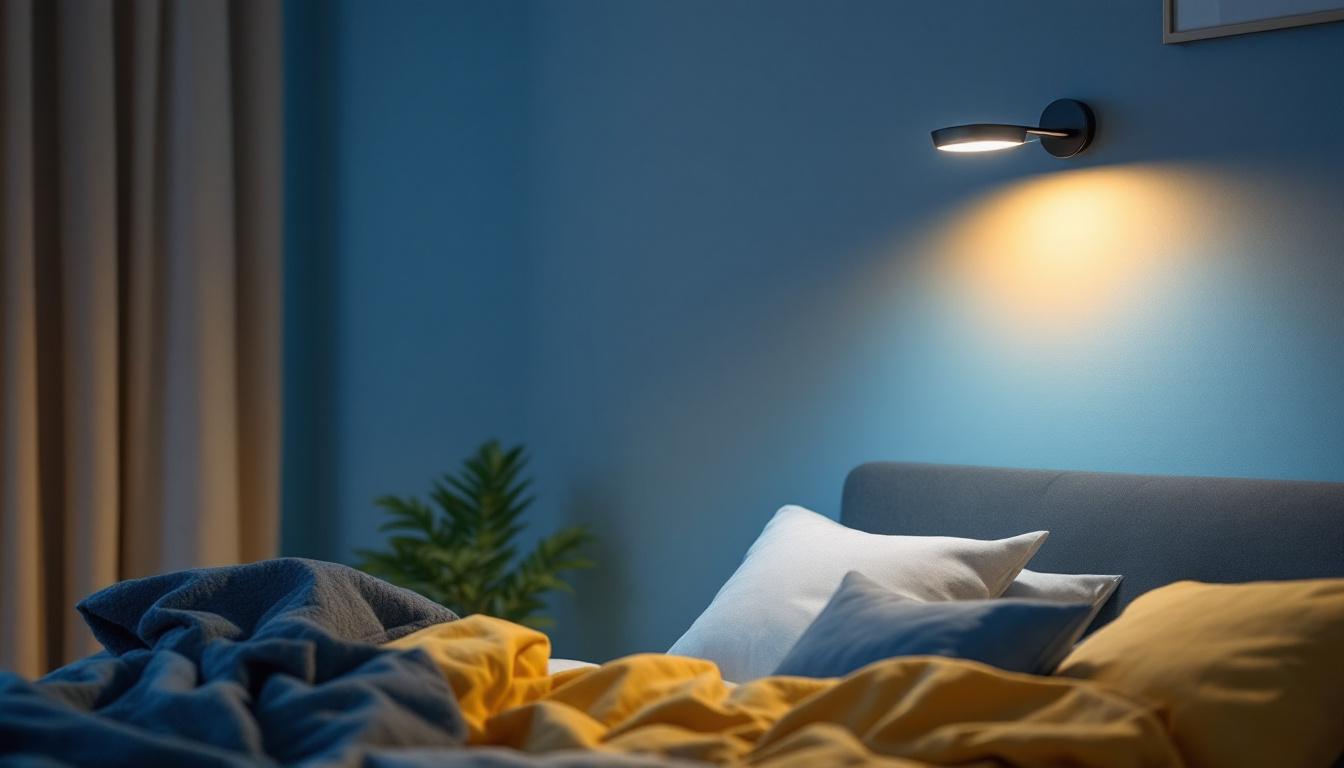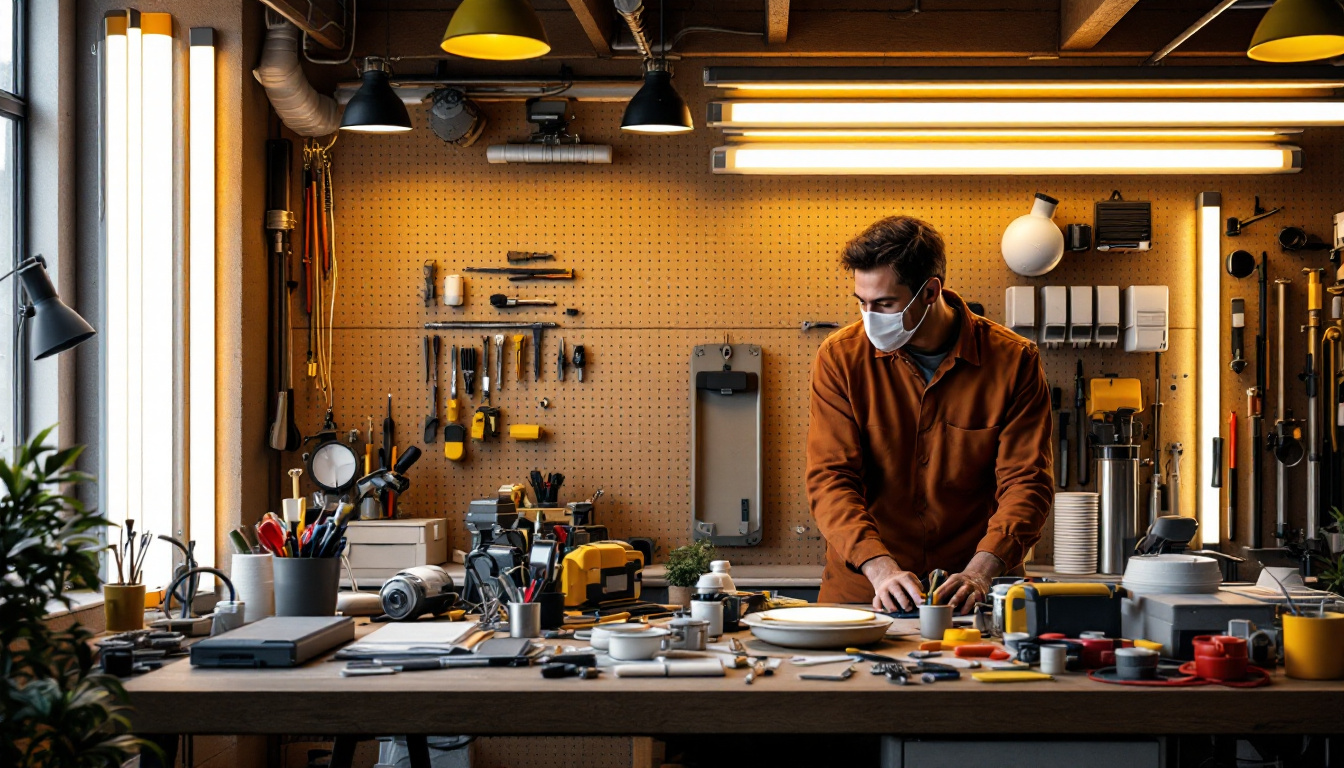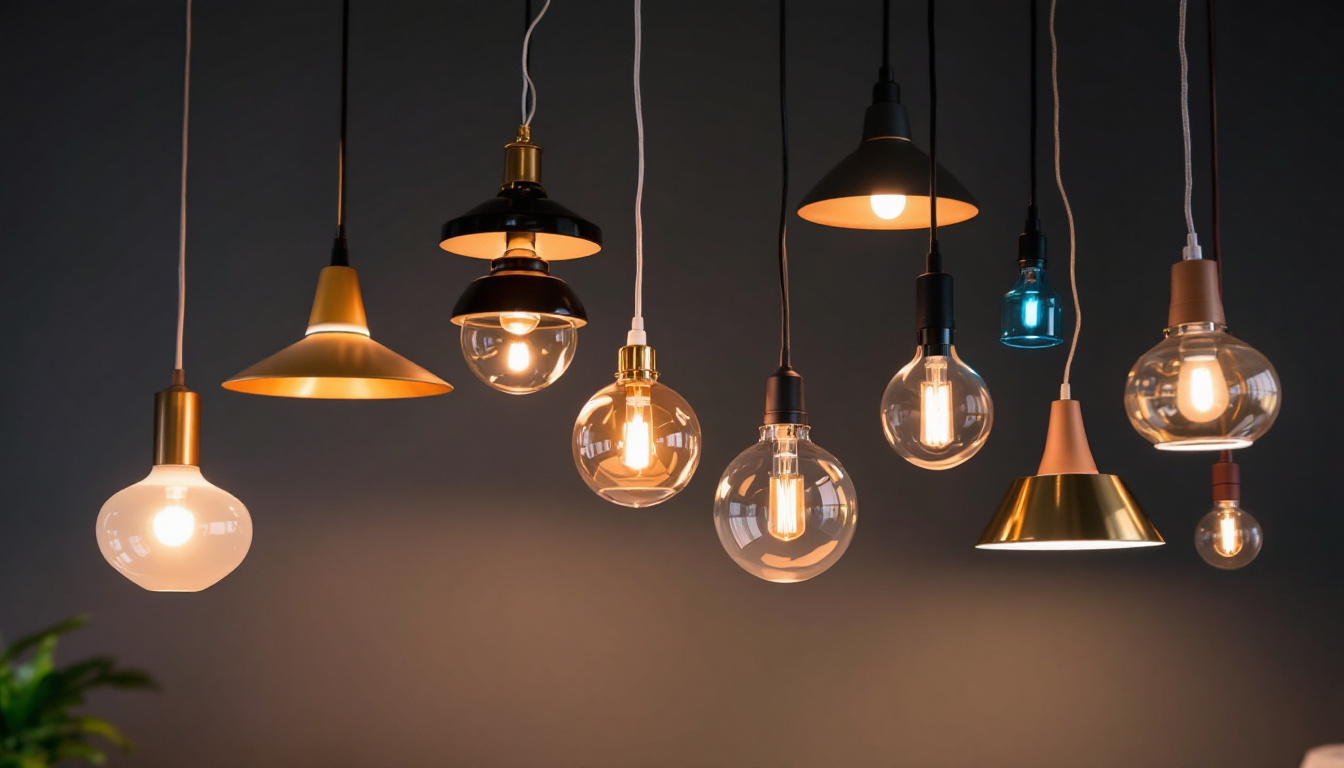
In the ever-evolving world of lighting design, flat panel LED lights have emerged as a popular choice among contractors. Their sleek design, energy efficiency, and versatility make them an ideal solution for various applications, from commercial spaces to residential settings. This article delves into the essential tools and considerations for lighting contractors working with flat panel LED 2×4 fixtures, ensuring that projects are executed with precision and professionalism.
Flat panel LED lights are thin, lightweight fixtures that provide a modern alternative to traditional lighting solutions. The 2×4 size refers to the dimensions of the panel, making it a suitable fit for standard ceiling grids. These fixtures are not only aesthetically pleasing but also offer significant energy savings and longevity compared to conventional fluorescent lights.
One of the primary advantages of flat panel LED lights is their energy efficiency. They consume significantly less power than traditional lighting options, leading to reduced electricity bills for clients. Additionally, the long lifespan of LED technology means that replacements are infrequent, saving time and resources for contractors.
Another benefit is the quality of light produced. Flat panel LEDs offer uniform illumination, reducing shadows and providing a pleasant ambiance in any environment. This feature is particularly important in commercial settings where visibility and aesthetics are crucial. The color temperature options available with flat panel LEDs also allow for customization, enabling spaces to be lit in a way that enhances productivity or creates a more relaxed atmosphere, depending on the needs of the occupants.
Flat panel LED 2×4 fixtures are versatile and can be used in a variety of settings. They are commonly found in offices, schools, hospitals, and retail spaces. Their slim profile allows for easy installation in drop ceilings, making them a favorite among contractors. Furthermore, they can be used in both new constructions and retrofitting projects, providing flexibility for different client needs.
In addition to standard applications, these fixtures can also be integrated with smart lighting systems, enhancing their functionality and appeal. This adaptability positions flat panel LEDs as a forward-thinking choice for modern lighting solutions. For instance, in smart office environments, these lights can be programmed to adjust brightness based on the time of day or occupancy, contributing to energy conservation while also ensuring optimal lighting conditions for employees. Moreover, in healthcare facilities, the ability to control light intensity can aid in creating a calming atmosphere for patients, which is essential for their recovery and comfort.
Another noteworthy aspect of flat panel LED fixtures is their environmental impact. With a lower carbon footprint due to reduced energy consumption and the absence of harmful substances like mercury, these lights are a more sustainable choice. Many manufacturers are also focusing on recyclable materials in their designs, further enhancing the eco-friendliness of flat panel LEDs. As businesses and institutions increasingly prioritize sustainability, the demand for such energy-efficient lighting solutions continues to grow, making flat panel LED fixtures an ideal option for those looking to make a positive impact on the environment.
For lighting contractors, having the right tools is crucial for the successful installation of flat panel LED 2×4 fixtures. The following tools are essential for ensuring that the installation process is efficient and effective.
Every contractor should have a set of basic hand tools readily available. This includes screwdrivers, pliers, wire strippers, and a utility knife. These tools are fundamental for handling electrical connections and securing fixtures in place. A good-quality level is also important to ensure that the panels are installed straight and evenly.
Additionally, a stud finder can be invaluable when installing fixtures in areas where the ceiling may not have a standard grid layout. This tool helps locate beams and supports, allowing for secure mounting of the panels. Beyond the basics, a tape measure is essential for accurately determining distances and ensuring that fixtures are spaced correctly, which is particularly important in larger installations where uniformity is key.
While hand tools are essential, power tools can significantly speed up the installation process. A cordless drill is a must-have for quickly driving screws and making holes for wiring. When working with multiple fixtures, having a drill with adjustable torque settings can prevent damage to the panels or surrounding materials.
Another useful power tool is a reciprocating saw, especially when retrofitting existing spaces. This tool can help cut through drywall or other materials to create openings for new fixtures, making the installation process smoother. Additionally, a laser level can be a game-changer for achieving precise alignment across multiple fixtures, ensuring that everything is perfectly straight and aesthetically pleasing.
Safety should always be a priority for lighting contractors. Personal protective equipment (PPE) such as safety glasses, gloves, and hard hats should be worn during installation to prevent injuries. Additionally, using a sturdy ladder or scaffolding is essential when working at heights to ensure stability and safety.
Having a first aid kit on-site is also a good practice. Accidents can happen, and being prepared can make a significant difference in response time and care. Furthermore, it’s wise to have a fire extinguisher nearby, especially when working with electrical components. Familiarity with emergency procedures and having a designated safety officer on-site can also enhance overall safety, ensuring that all team members are aware of potential hazards and the proper protocols to follow in case of an emergency.
Installing flat panel LED 2×4 fixtures requires careful planning and execution. Following best practices can help ensure that the installation is successful and meets client expectations.
Before beginning installation, it is crucial to plan the layout of the fixtures. This involves determining the appropriate spacing between panels to achieve optimal lighting coverage. Factors such as room size, ceiling height, and the purpose of the space should be considered during this planning phase.
Using a lighting design software can aid in visualizing the layout and ensuring that the fixtures will provide adequate illumination. This step can save time and prevent costly mistakes during installation. Additionally, it is beneficial to consider the color temperature of the LED panels, as different temperatures can create varying atmospheres in a room. For example, cooler temperatures are often preferred in workspaces to enhance focus, while warmer tones can create a more inviting environment in relaxation areas.
Proper wiring is essential for the functionality of flat panel LED fixtures. Contractors should ensure that all electrical connections are secure and compliant with local codes. Using the correct gauge wire and connectors is vital for safety and performance.
It is also important to consider the power supply. Ensuring that the circuit can handle the load of the new fixtures is crucial to prevent overloads and potential hazards. Consulting with an electrician may be necessary in complex installations. Furthermore, implementing a circuit management system can enhance energy efficiency and allow for better control over lighting levels in different areas of a building. This can be particularly useful in multi-use spaces where lighting needs may vary throughout the day.
Once the fixtures are installed, thorough testing is essential. Contractors should check each panel to ensure it is functioning correctly and providing the desired light output. This quality assurance step can help identify any issues before the project is completed and handed over to the client.
Documenting the installation process, including any challenges faced and solutions implemented, can also be beneficial. This information can serve as a reference for future projects and help improve overall efficiency. Additionally, gathering feedback from the client post-installation can provide valuable insights into the performance of the fixtures and the satisfaction level of the end-users. This feedback loop can inform future installations and enhance the overall quality of service provided by contractors.
After installation, ongoing maintenance is crucial to ensure the longevity and performance of flat panel LED fixtures. Educating clients about proper care and potential issues can foster a positive relationship and lead to future business opportunities.
Contractors should recommend regular inspections of the installed fixtures. This includes checking for any signs of flickering, dimming, or complete failure. Early detection of issues can prevent more significant problems down the line and ensure that the lighting remains effective.
Encouraging clients to keep a log of any maintenance performed can also be helpful. This documentation can assist in identifying patterns and determining when replacements may be necessary.
Offering customer support after installation can set a contractor apart from the competition. Providing clients with contact information for any questions or concerns can enhance their experience and build trust. Additionally, offering maintenance contracts can create a steady revenue stream and ensure that clients receive ongoing support.
Consider creating a resource guide that outlines common issues and troubleshooting steps. This can empower clients to address minor problems independently while knowing when to reach out for professional assistance.
Flat panel LED 2×4 fixtures are an excellent choice for lighting contractors looking to provide modern, efficient solutions for their clients. By understanding the benefits, having the right tools, following best practices during installation, and offering ongoing support, contractors can ensure successful projects and satisfied customers.
As the demand for energy-efficient lighting continues to grow, staying informed about the latest technologies and techniques will be essential for contractors in the lighting industry. Embracing innovation and prioritizing quality will ultimately lead to long-term success in this competitive field.
Ready to elevate your lighting projects with the sleek and energy-efficient flat panel LED 2×4 fixtures? Look no further than LumenWholesale, where we provide contractors with the highest quality, spec-grade lighting products at unbeatable wholesale prices. Say goodbye to inflated markups and hello to superior lighting solutions that meet the highest industry standards. With LumenWholesale, bulk buying is a breeze, and with free shipping, you can rest assured that you’re getting the best value without any hidden fees. Don’t compromise on quality or affordability. Wholesale Lighting at the Best Value is just a click away. Choose LumenWholesale for quality, affordability, and convenience in all your lighting needs.

Discover the pivotal role wall mount bed lights play in modern lighting projects.

Discover the essential checklist for lighting contractors working with LED tube lights.

Discover how solar palm tree lights can revolutionize your lighting projects.

Discover innovative strategies to future-proof your lighting projects with hanging lighting pendants.